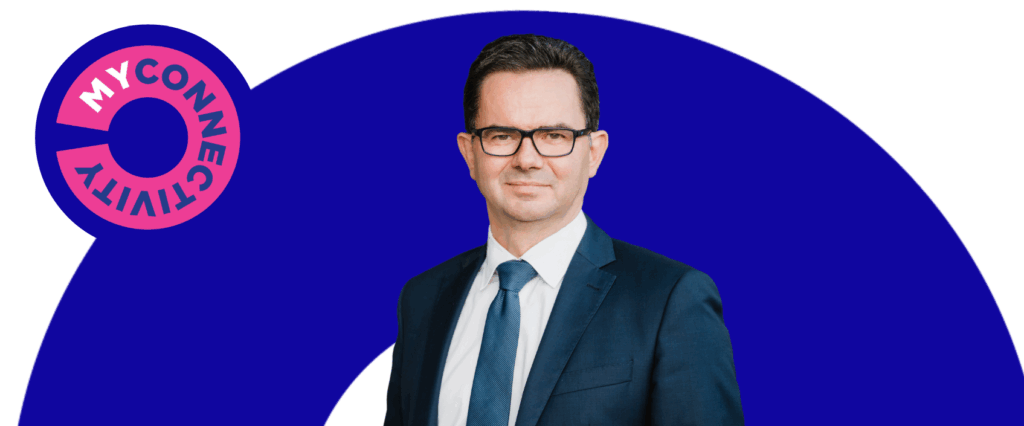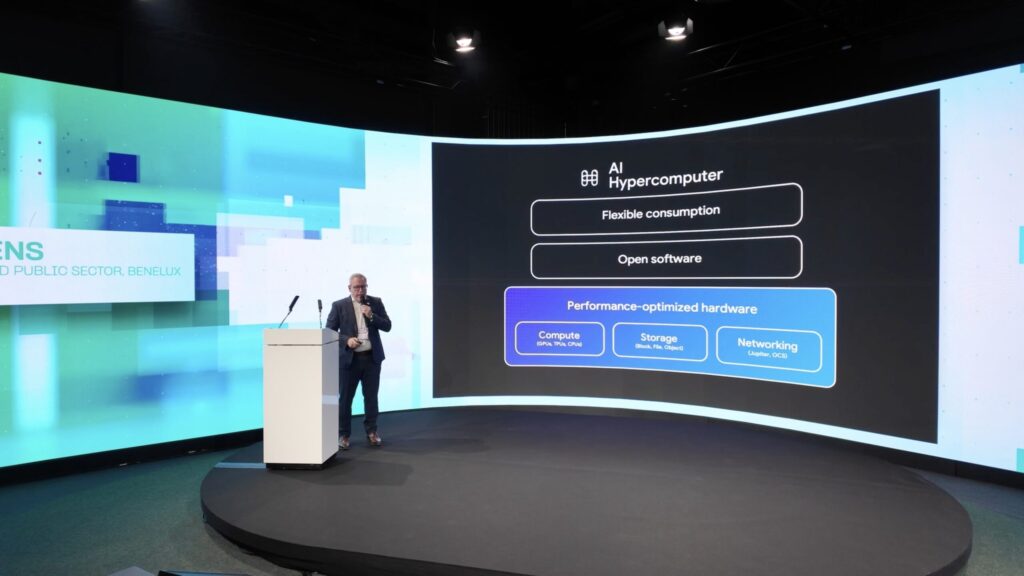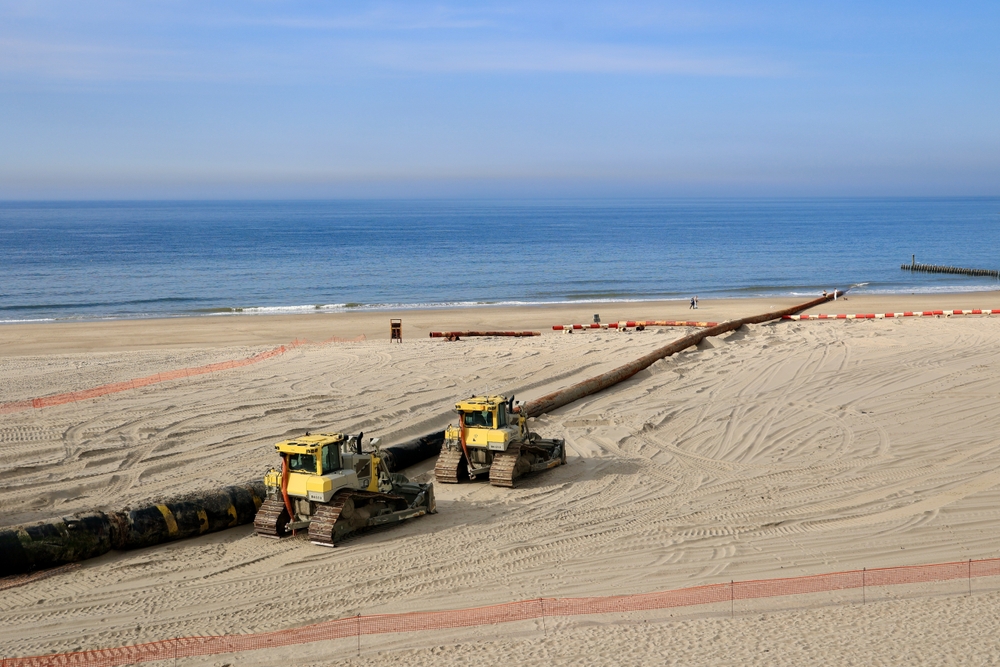
Submarine cables: What needs to happen on the seabed to keep our connectivity afloat
Scroll
Anyone sitting on a beach and observing intense dredging activity off the coast is likely witnessing crucial infrastructure work related to connectivity. There is a good chance that submarine cables are being laid there, which can rightly be described as the backbone of international data traffic.
Scroll
The figures alone prove this backbone role: there are currently more than 600 active or planned submarine cables worldwide, with a total length of approximately 1.5 million kilometres. That is more than 30 times the circumference of the equator. The exact number varies constantly, as new cables are constantly being laid and existing ones taken out of service. The latter occurs because the life cycle of a submarine cable is only around 25 to 30 years. The cables’ role is clear: they are responsible for transmitting 99% of all digital data.
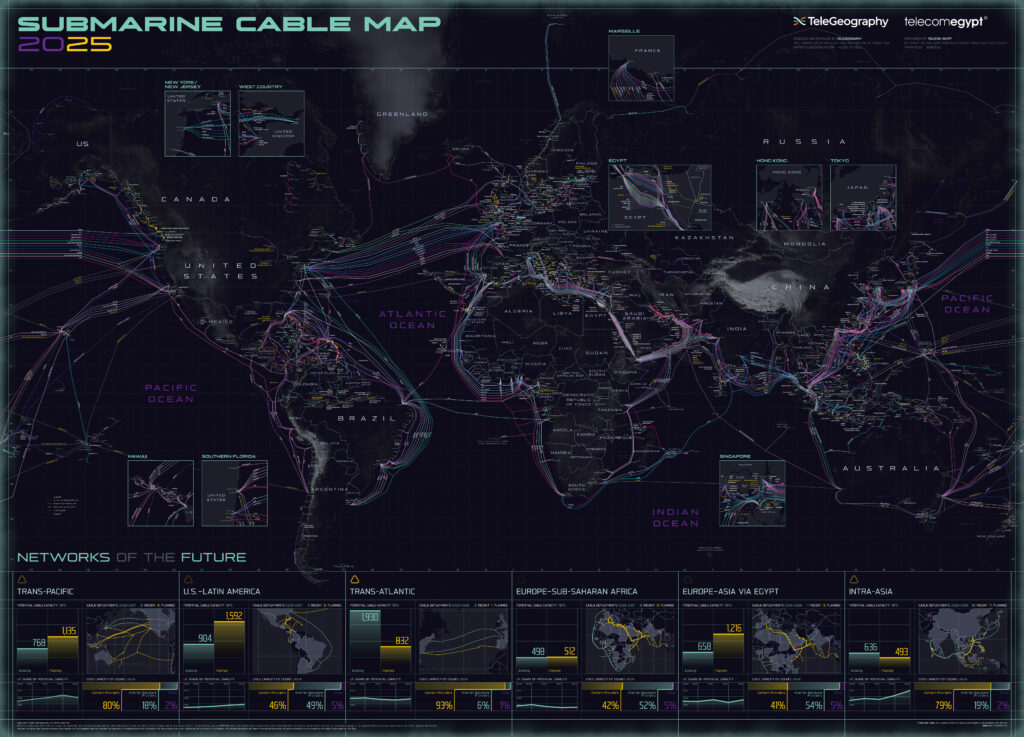
![]()
Velocity: data companies rely on the speed of light
Against this backdrop, it is not surprising that the owners of submarine cables are companies that transmit data. While these were traditionally telecommunications companies, today they are primarily data giants such as Google, Amazon and Meta. Their cable requirements continue to grow in the age of artificial intelligence, especially since cables transport data many times faster than satellites. This is made possible by the fibre-optic cable structure, through which data is transmitted at almost the speed of light.
Economic factor: €25,000 to €50,000 per kilometre
It is equally unsurprising that the respective operators are investing considerable sums of money in the submarine cable infrastructure. In general, one kilometre of submarine cable costs between €25,000 and €50,000, mainly due to the high technological complexity of the laying process. This requires specially equipped ships that must also be particularly robust for use on the high seas. Since many cable connections are located in the Atlantic between Europe and the USA or in the Pacific between the USA and East Asia, they are sometimes up to 4 km below sea level. Costly diving robots are also used there.
Damages: Only around 200 incidents per year
The question that arises with such a sophisticated infrastructure is that of its vulnerability. According to the International Cable Protection Committee, there are around 200 defects and instances of damage to undersea communications infrastructure every year. Most of these are caused by ship anchors or trawling, which involves dragging heavy equipment across the seabed.
Hybrid warfare: Effectiveness of sabotage remains low
In recent times, the global political situation has led to an increasing number of cases where sabotage is suspected, particularly in connection with Russia and hybrid warfare. However, it is usually difficult to prove this conclusively. This is due, on the one hand, to the geographical depth of the incidents and, on the other hand, to their location in international waters without clear legal jurisdiction. In any case, most experts doubt the effectiveness of such acts of sabotage, as the high volume of submarine cables worldwide can usually easily compensate for local damage.
175 years of submarine cables – anniversary of a connectivity enabler
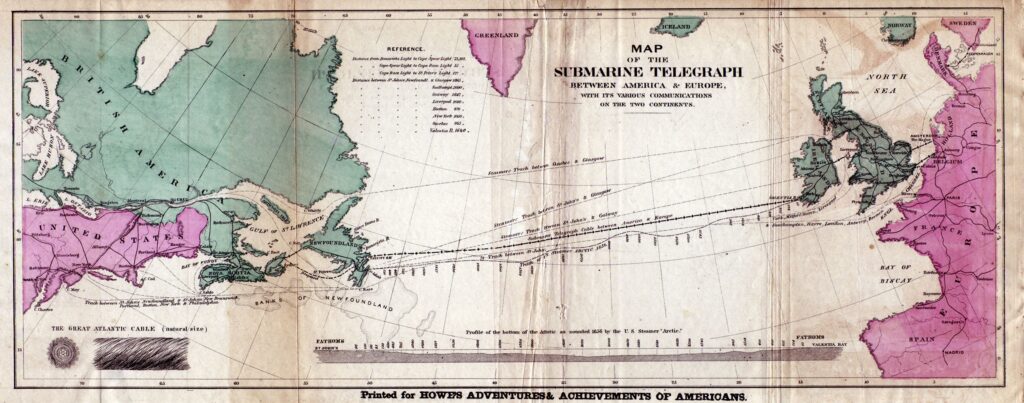
Submarine cables may be the backbone of modern connectivity, but they are by no means a product of the Internet age. The very first telegraph cable between England and France was laid in 1850, but it lasted only one day. The first transatlantic telegraph cable, laid in 1858, proved to be more resilient, lasting four weeks. A permanent telegraph connection between Europe and America was finally established in 1866, followed by the first transatlantic telephone cable in 1956. Then, in 1988, the laying of the first transatlantic fibre-optic cable heralded the dawn of the modern era of global communication.
